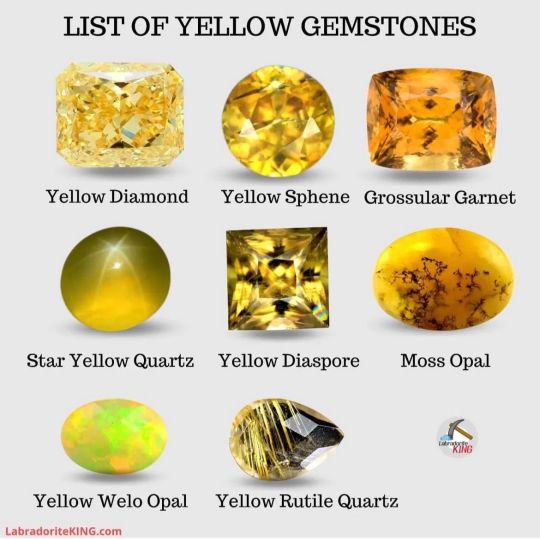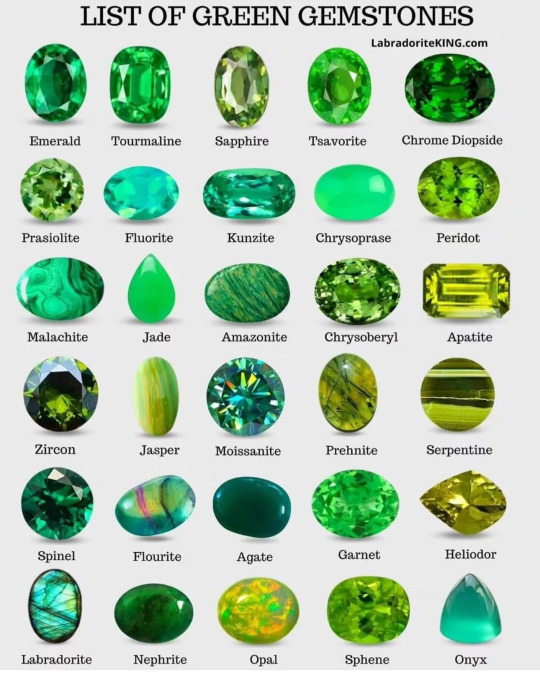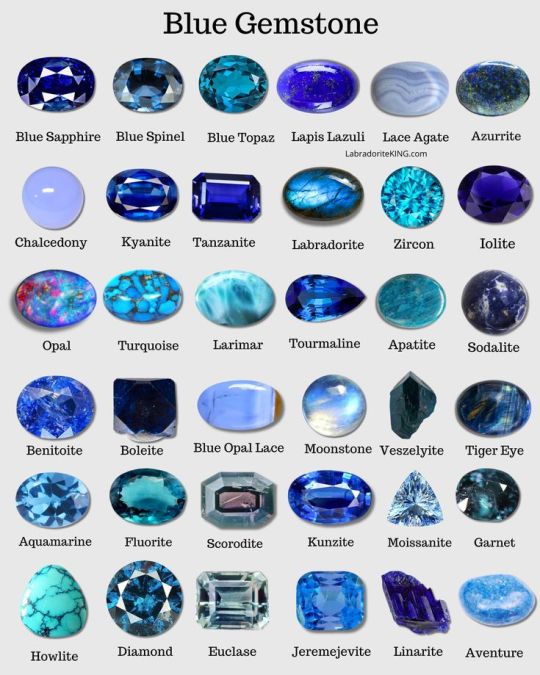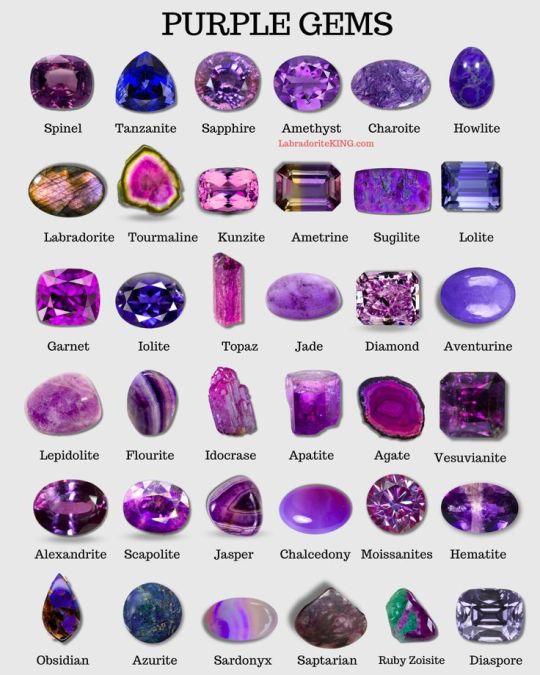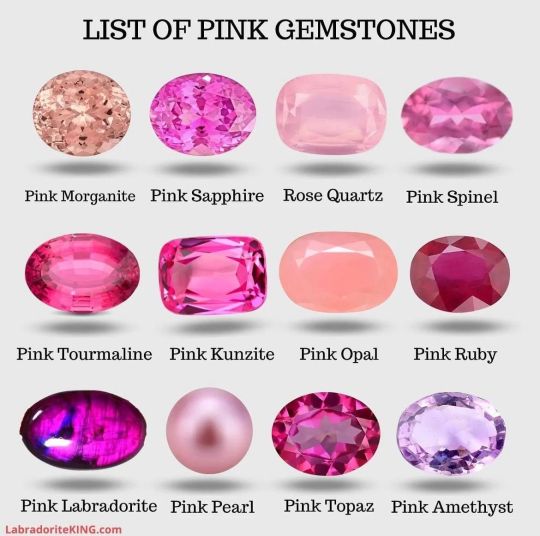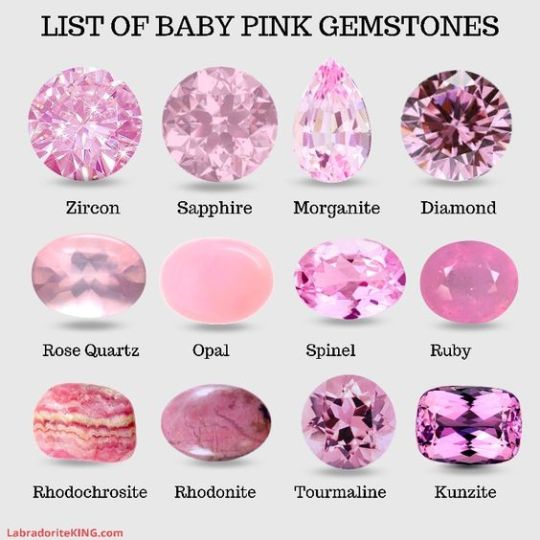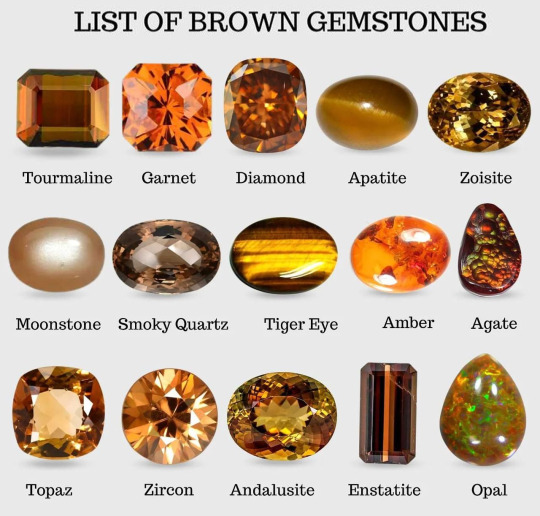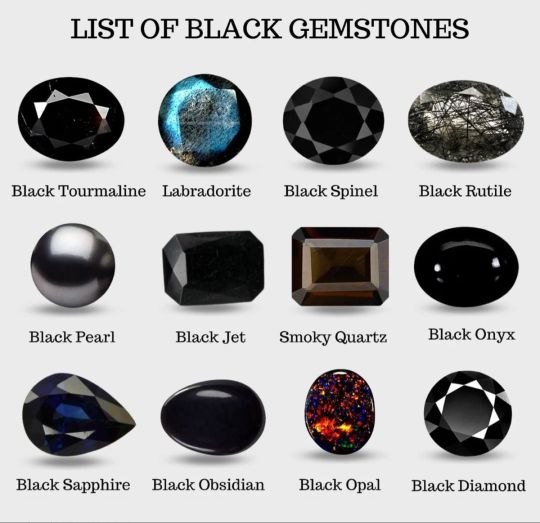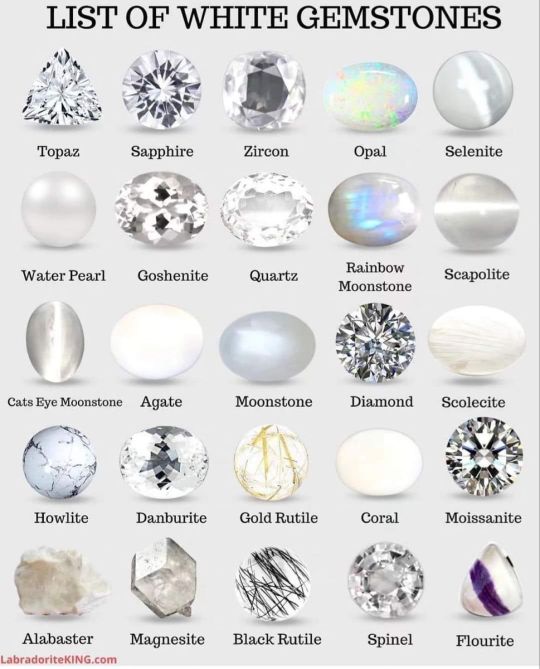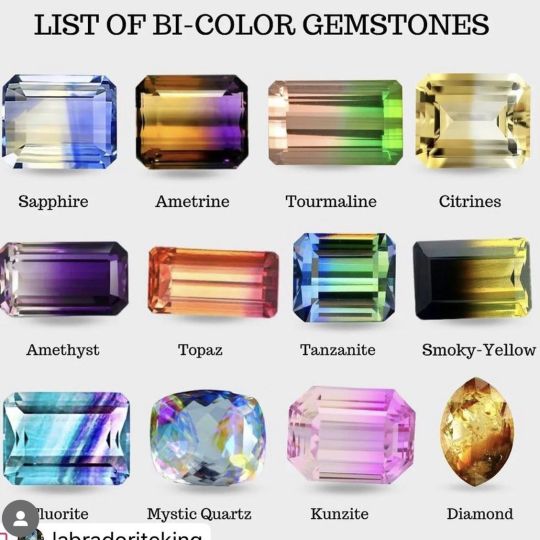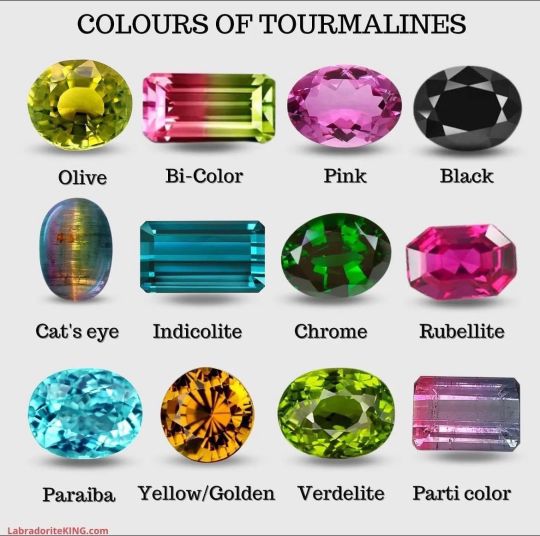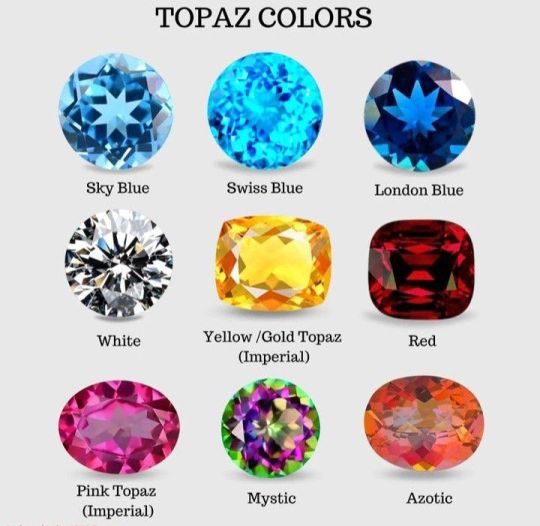Text
this is so mean but sometimes i see published writing and suddenly no longer feel insecure about my own writing ability. like well okay that got published so im guessing i dont have much to worry about
97K notes
·
View notes
Text
Dear god, sleepy intimacy makes me so very happy.
One person sleeping with their head on the other person’s lap. Getting all drowsy-snuggly when they’re too tired to see straight. Being tucked in and kissed on the forehead before they pass out. Gentle touches while they drift off. Trusting the other person to watch over them and make sure nothing happens to them while they’re out.
Just… sleepy intimacy, man.
146K notes
·
View notes
Text
i hate how you get desensitized to the cool stuff in your WIP if you've been writing it for a long time so when you read back over it you're like "this isn't as cool as i thought :(" but it still is! you just read it too many times
97K notes
·
View notes
Text
Writing Rage: How To Make Your Characters Seem Angry
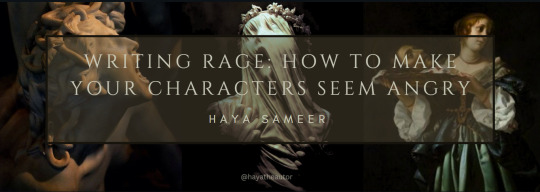
Anger is a powerful emotion that can add depth and intensity to your character's personality. If you're facing issues realistically expressing your characters' rage, here are some quick tips to help you get the ball rolling. Whether your character is seething with quiet rage or exploding in a fit of fury, these tips will help you convey their emotions vividly to your readers.
This is blog one in my writing different emotions series. Go check it out to explore more emotions!
Facial Expressions
Furrowed Brows: Describe the deep lines between their eyebrows, signaling frustration or intensity.
Tightened Jaw: Mention their clenched jaw, indicating suppressed anger or tension.
Narrowed Eyes: Highlight how their eyes narrow, showing suspicion, irritation, or anger.
Raised Upper Lip: Note the slight curl of the lip, suggesting disdain or contempt.
Flared Nostrils: Describe how their nostrils flare, indicating heightened emotions like anger or aggression.
Body Language and Gestures
Crossed Arms: Show their defensive stance, portraying resistance or defiance.
Pointing Finger: Describe them pointing accusatively, conveying aggression or assertion.
Fist Clenching: Mention their clenched fists, symbolizing anger or readiness for confrontation.
Hand Gestures: Detail specific hand movements like chopping motions, indicating frustration or emphasis.
Aggressive Posturing: Describe them leaning forward, invading personal space to intimidate or assert dominance.
Posture
Tense Shoulders: Highlight their raised or tense shoulders, indicating stress or readiness for conflict.
Upright Stance: Describe their rigid posture, showing control or a desire to appear strong.
Stiff Movements: Mention their jerky or abrupt movements, reflecting agitation or impatience.
Eye Contact
Intense Stares: Describe their intense or prolonged gaze, signaling confrontation or challenge.
Avoiding Eye Contact: Note how they avoid eye contact, suggesting discomfort or a desire to disengage.
Glaring: Mention how they glare at others, conveying hostility or disapproval.
Dialogue
Raised or strained tone with variations in pitch reflects heightened emotions.
Short, clipped sentences or abrupt pauses convey controlled anger.
Use of profanity or harsh language intensifies verbal expressions of anger.
Volume increase, from whispers to shouts, mirrors escalating anger levels.
Monotonous or sarcastic tone adds layers to angry dialogue.
Interruptions or talking over others signify impatience and frustration.
Aggressive verbal cues like "I can't believe..." or "How dare you..." express anger explicitly.
Reactions
Physical Reactions: Detail physical responses like increased heart rate, sweating, or trembling, showing emotional arousal.
Defensive Maneuvers: Describe how they react defensively if someone tries to touch or talk to them, such as stepping back or raising a hand to ward off contact.
Object Interaction
Aggressive Handling: Show them slamming objects, throwing things, or gripping items tightly, reflecting anger or aggression.
Use of Props: Mention how they use objects to emphasize their emotions, like slamming a door or clenching a pen.
Descriptive Words:
Verbs:
Roared with fury, expressing unbridled anger.
Snapped in frustration, indicating sudden irritation.
Shouted angrily, releasing pent-up emotions.
Glared fiercely, showing intense displeasure.
Slammed objects in rage, symbolizing anger's physical manifestation.
Grunted in annoyance, displaying impatience.
Raged vehemently, portraying uncontrolled anger.
Adjectives:
Furious and incensed, conveying intense anger.
Seething with rage, bubbling beneath the surface.
Livid and fuming, exhibiting visible anger.
Agitated and irritated, showing growing impatience.
Enraged and wrathful, expressing extreme anger.
Vexed and irate, indicating annoyance.
Infuriated and incandescent, highlighting explosive anger.
Looking For More Writing Tips And Tricks?
Are you an author looking for writing tips and tricks to better your manuscript? Or do you want to learn about how to get a literary agent, get published and properly market your book? Consider checking out the rest of Haya’s book blog where I post writing and publishing tips for authors every Monday and Thursday! And don’t forget to head over to my TikTok and Instagram profiles @hayatheauthor to learn more about my WIP and writing journey!
2K notes
·
View notes
Text
please please please please reblog if you’re a writer and have at some point felt like your writing is getting worse. I need to know if I’m the only one who’s struggling with these thoughts
20K notes
·
View notes
Text
if you’re white and wanna write a poc character and feel awkward about it i implore you to ignore any twitblr stuff treating it as a massive ethical burden and instead come in more with the same mindset you’d have if you wanted to write about idk firefighters but didn’t know anything about firefighters so you do... research. Like fuck off with the weird kinda creepy calls for spiritual introspection you’re not writing about god damn space aliens you’re writing about humans and if you think you need more perspective of different life experiences just read?
129K notes
·
View notes
Text
could've followed my fears all the way down
Chapter 25
Chapters: 1, 2, 3, 4, 5, 6, 7, 8, 9, 10, 11, 12, 13, 14, 15, 16, 17, 18, 19, 20, 21, 22, 23, 24
Thomas doesn’t mean to actually fall asleep when Rosa and Frankie leave, but he is tired. Even reading doesn’t keep him awake.
Not a lot of things to do, right now. Anya says that’s part of healing, but it’s boring. And he wakes up from nightmares all the time, too. When he has someone with him, they’re a little better, but most of his sleep isn’t really that restful.
Maybe today’s his lucky day, though, and he won’t have any nightmares at all. He adjusts the pillows a little, pulls at the blanket that sits on Gally’s chair until he can cover himself with it, and lets his mind drift into that space between thinking and dreaming.
That’s a mistake.
He knows he’s outside before he even opens his eyes before the birds and the wind are much clearer than they were before.
These dreams are the worst; the ones where he’s alone until Newt, Chuck, or Teresa decide to visit. Much more rarely, he’ll see Alby or Winston, even Ava Paige.
He doesn’t want to be outside. Not even when the outside is really just in his head.
He shifts, hearing someone humming nearby—none of his dream visitors hum. Usually they don’t talk much, if at all.
Thomas doesn’t know if it’s because just seeing them is bad enough, or if it’s because he’s already forgotten their voices.
He still doesn’t open his eyes. He doesn’t want to see anything. He doesn’t want to know if this is a dream or real.
But he can’t stop himself from curling the fingers on his good hand into the ground. The ground feels different, in dreams. He doesn’t know why, it just does.
The ground feels the way ground should, though, which means he’s not dreaming. He still doesn’t want to open his eyes; whatever this is can’t be good.
Damn it, Rosa.
Is it really that hard to just believe him?
Is it?
“Are you waking up, Thomas? Just lay still, you’re okay. You don’t have to worry about them anymore.”
“Rosa, what did you do?” He opens his eyes, but doesn’t dare sit up to try and look at her. He can’t tell where they are by looking at the sky. It’s less obstructed by tree branches than he would have thought.
“It’s okay, Thomas. You’re going to be okay.”
Thomas closes his eyes again. He doesn’t need to have a panic attack in the middle of the forest when he doesn’t even know where they are.
Maybe he got lucky and Rosa wasn’t able to get that far.
“Rosa, we need to go back. I— I can’t stay out here, you know that.”
“We don’t need to go back. You’re okay. You said you were doing better!”
“I can’t be out in the forest, Rosa!” He shouldn’t be yelling, probably, but he wants someone to come and find them before things get worse.
“It’s not for long, I promise.”
“I can’t be out here at all,” Thomas tells her. He stops reacting to her after that, focusing on keeping his breathing even and not freaking out.
He really doesn’t want to have a panic attack around her.
He wants Minho and Gally, and he wants to be out of this damn forest.
He’d rather be sitting in a dream with his dead friends than here.
finish on ao3 or under the cut
“Hey, Anya, I thought Thomas wasn’t cleared to leave yet.”
“He’s not.” Anya raises an eyebrow at Minho. “What, is he missing?”
“He’s not in the cabin or around it at all. He’s not stupid, I don’t think he would leave without telling us.”
He wouldn’t get very far if he tried.
Minho looks around, like he’s going to find someone with a sign saying they took Thomas. Or maybe just Thomas. He really wants to think that he’s being overprotective, that Thomas had a burst of energy or is hiding under the bed to scare them or something.
Anya ruins that for him immediately.
“We have to find him. Depending on how he moved, he could have gotten reinjured.”
“He desperately wants to be out of bed, but he knows that will keep him there longer. He wouldn’t do anything to risk it.” Minho insists. Thomas hates being cooped up, hates having to depend on everyone else for everything, but he’s not going to put his health on the line if he doesn’t have to.
Hopefully.
Last time he ran, it got them here. They’ve been talking, Minho thought things were better. Thomas hasn’t been happy, really, but he’s seemed more settled lately. He’s been hoping they’ve figured enough of it out that Thomas wouldn’t run again as soon as he could.
“I believe you, Minho. I don’t think he would do this himself, either. We’ll have to see if anyone knows anything.”
“I have to tell Gally.” He groans. “He’s going to hate that he still can’t come and help.”
“You do that. I’ll go check with Jorge to see if he’d gone to talk to Thomas yet. If he had, he might have noticed something off.”
He doesn’t step into the kitchen, instead leaning over the counter.
“Hey, Gally.” He nods to Frypan. “Um. There’s a problem.”
“What happened? Is Thomas okay?”
“That’s the problem. I went to check on him, and he’s not there.”
“He knows he can’t leave yet.”
“I think someone took him, or something. He’s been doing okay with reading by himself for the past week, why would that change now?”
“Gally,” Frypan says. “Wasn’t Rosa glaring at you today? I thought she might be jealous.”
“Why would Rosa take Thomas? They’re friends. He really got along with her and Frankie in the Scorch.” Minho hadn’t been too happy about that one. He’d spent days thinking that Thomas was dead, but instead he’d been having a decent time with the girls. He’s over it now that he knows some of them better.
“Who knows?” Gally leans against the counter, looking tired, and Minho can’t help but sympathize.
Their sort-of boyfriend sure does get himself into a lot of trouble.
“Gally, I’m going to look for him. If you see Rosa, will you ask her? Or maybe Frankie, she might know something.”
“I will.” Gally nods. “And when you find him— ”
“I’ll let you know.” He reaches over the counter to squeeze Gally’s hand. Before recently, he hadn’t considered that he and Gally might be doing anything close to dating; they hadn’t liked each other much in the Glade, especially after Gally’s Changing.
They deserve a little happiness, though. After everything.
Frankie finds him before he even gets a chance to look for her or Rosa.
“You know what happened, don’t you?”
“Yeah.” Frankie bites her lip. “Rosa— Thomas had all these bruises all the time, and she kept pushing him to say you and Gally were hurting him, even though he insisted you weren’t. We visited him this morning, and I think she took him.”
“Did you help?”
“No! I mean, at first, I kind of agreed with her, but you and Gally aren’t hurting Thomas. I don’t know where she took him, though.”
“No idea at all?”
“No. It wasn’t to our cabin, because I was just there. Maybe the forest?”
Shit.
If Rosa has Thomas in the forest… Thomas doesn’t even like talking about the forest right now. Hopefully she has enough sense not to take him there, but their luck has never been that good.
Minho spots Anya and waves her down. “Talk to Anya. I’m going to go find them.”
<- 24 26 ->
#thomas#minho#gally#tmr#thominho#thomally#newt#could've followed my fears all the way down#nix writes#minally#tmr fic#maze runner fic#thominally fic#maze runner#thomally fic#minally fic#thominho fic#fic update#fic wip#ao3
3 notes
·
View notes
Text
“These specimens have been conditioned for contact. They’re safe. But if you see them in the wild, DO NOT approach. It’s very dangerous.” “Why? Are they aggressive?” “No, they’re extremely friendly and very playful. That’s why it’s dangerous.”
4K notes
·
View notes
Text
I just discovered foodtimeline.org, which is exactly what it sounds like: centuries worth of information about FOOD. If you are writing something historical and you want a starting point for figuring out what people should be eating, this might be a good place?
199K notes
·
View notes
Text
Hey btw, if you're doing worldbuilding on something, and you're scared of writing ~unrealistic~ things into it out of fear that it'll sound lazy and ripped-out-of-your-ass, but you also don't want to do all the back-breaking research on coming up with depressingly boring, but practical and ~realistic~ solutions, have a rule:
Just give the thing two layers of explanation. One to explain the specific problem, and another one explaining the explanation. Have an example:
Plot hole 1: If the vampires can't stand daylight, why couldn't they just move around underground?
Solution 1: They can't go underground, the sewer system of the city is full of giant alligators who would eat them.
Well, that's a very quick and simple explanation, which sure opens up additional questions.
Plot hole 2: How and why the fuck are there alligators in the sewers? How do they survive, what do they eat down there when there's no vampires?
Solution 2: The nuns of the Underground Monastery feed and take care of them as a part of their sacred duties.
It takes exactly two layers to create an illusion that every question has an answer - that it's just turtles all the way down. And if you're lucky, you might even find that the second question's answer loops right back into the first one, filling up the plot hole entirely:
Plot hole 3: Who the fuck are the sewer nuns and what's their point and purpose?
Solution 3: The sewer nuns live underground in order to feed the alligators, in order to make sure that the vampires don't try to move around via the sewer system.
When you're just making things up, you don't need to have an answer for everything - just two layers is enough to create the illusion of infinite depth. Answer the question that looms behind the answer of the first question, and a normal reader won't bother to dig around for a 3rd question.
111K notes
·
View notes
Note
Did some digging in your blog, couldn't find what I was looking for so I am here to ask about burns.
Q1. Is there a difference in reaction to burns on the head/neck/shoulder vs lower on the body/arms?
Q2. How big of factor is shock in burn situations? Would someone die of shock or burn damage first?
Q3. Best case scenario, what would the recovery timeline look like with 20-30% burn coverage?
Thank you very much for everything you do. I consider you my favorite medical educator.
Q1: Not really. But burns on the head, neck and shoulders need particular attention because they could signal a compromised airway. This is because a burn that close to the face makes it more likely that the person breathed extremely hot air or vapor, which could burn the mouth, throat, or even into the lungs. Burns in the mouth or throat could cause swelling which could make it difficult to breathe, while burns in the lungs themselves could cause the lungs to not be able to exchange oxygen and carbon dioxide. Without treatment, these problems can be fatal.
Q2: Shock can be pretty significant with burns, especially hypovolemic and septic shock.
Hypovolemic shock occurs because of the water loss associated with burns. Skin does a lot of work regulating the amount of water in our bodies. Once you remove the skin with a burn, you end up losing water and electrolytes really, really fast. The water and electrolytes have to be replaced, either through drinking or through an IV. If they aren't, the person could die because there isn't enough blood volume to maintain blood pressure (called hypovolemic shock).
Septic shock is a condition in which the body experiences overwhelming infection. The skin, again, prevents infection by being a physical barrier between the inside of the body and the outside. If it is removed with a burn, that opens up the body to a severe and widespread infection, which becomes septic shock. This is usually prevented with IV antibiotics and silver-impregnated creams on the burned areas.
Q3: Anywhere from 3 days (very superficial burns, like minor scalds), to 3+ months (very deep burns requiring skin grafts). Managing scarring and rehabilitation may be a significantly longer process.
21 notes
·
View notes
Text
Let's talk about misdirection.
Misdirection in storytelling, through foreshadowing and other techniques, is a powerful tool that can enhance suspense, surprise, and engagement in your narrative and make plot twists more unexpected.
Remember to maintain coherence and avoid contrivances that may undermine the integrity of your storytelling.
Here are some techniques you can use to effectively misdirect readers:
Red Herrings: Introduce elements or clues that suggest a certain outcome or plot direction, only to later reveal that they were misleading. These false leads can divert readers' attention away from the true resolution.
Selective Detailing: Highlight certain details or events in a way that implies their significance, while downplaying or omitting others that might be more relevant to the actual outcome. By controlling what information readers focus on, you can steer their expectations.
Character Misdirection: Use characterisation to mislead readers about characters' true intentions, motivations, or identities. Create multi-dimensional characters who may behave ambiguously or inconsistently, leaving readers unsure of their true allegiances, motivations, or goals.
Foreshadowing: Employ foreshadowing to hint at future events or outcomes, but do so in a way that misleads interpretation. Provide clues that could be interpreted in multiple ways or that lead readers to expect one outcome while delivering another. (See my previous post about foreshadowing for more!)
Misleading Narration: Utilise an unreliable narrator or perspective to present events in a biased or distorted manner. Readers may trust the narrator's account implicitly, only to discover later that their perceptions were flawed or intentionally deceptive.
Subverting Tropes: Set up situations or scenarios that seem to follow familiar narrative tropes or conventions, only to subvert them in unexpected ways. This can keep readers guessing and prevent them from accurately predicting the story's trajectory.
Parallel Storylines: Introduce secondary storylines or subplots that appear unrelated to the main narrative but eventually intersect or influence the primary plot in unexpected ways. This can distract readers from anticipating the main storyline's developments.
Setting: Manipulate the setting or environment to create false impressions about the direction of the plot. For example, presenting a seemingly idyllic setting that harbors dark secrets or dangers.
Timing and Pacing: Control the pacing of your story to strategically reveal information or developments at opportune moments, leading readers to draw premature conclusions or overlook important details. (See my post on pacing for more tips!)
Twists and Reversals: Incorporate sudden plot twists or reversals that upend readers' expectations and challenge their assumptions about the story's direction. Ensure that these twists are logically consistent but sufficiently surprising to catch readers off guard.
Happy writing!
2K notes
·
View notes
Note
In film I often see medical personnel look at an individual’s past scars or even current injuries and go “that’s a gunshot wound.” But HOW DO THEY KNOW?
Maybe they got stabbed by a screwdriver or giant knitting needles.
I also recently saw a show where a person had bullet grazes (Move to Heaven) and the personnel still came to the conclusion it was from a bullet. Tell me what I’m missing. 😂
Honestly not sure. Usually the way we find out a particular scar is from a GSW is that it's in their medical record or they say something like "wanna see where I got shot?"
Other than that, GSW scars come in a lot of different shapes and sizes and are usually coupled with some kind of surgical scar (especially if the wound is in the abdomen or chest) so it's not always clear exactly what caused it unless we already know.
13 notes
·
View notes
Text
"It takes HOW LONG?" Black Hair is an Art (pt.2)
(This is part two of the hair lessons, focusing on writing/narratives. If you want to know how the styles LOOK, refer to part 1 and its addendum)
Now that you know what our hair actually looks like, we’re going to discuss incorporating that into your writing (original fic, fanfic, webcomics, anything with a narrative). You don’t HAVE to give us a dissertation on "how you studied 'The Black People’s Hair'" in your story. That’s not what I’m asking you to do. I’m just asking you to CONSIDER the effort and existence of it. The same way you put effort into discussing nonblack hair textures? Should be the sort of tenderness and care you put into discussing ours. It does not stand to reason that I have read thousands of stories describing "the silky, black/blonde tresses/waves that fell down their pale back as their lover ran their fingers through them", but Black readers have nothing of the sort to compare to without seeking our own authors out. Our hair deserves some loving and adoration too!
This is a very long post describing hairstyles and how they can correspond to your character's design and decisions, so I'll put a read more here. The sections are organized into 'Twist Out', 'Afros', 'Locs', 'Braids', 'Black Men', and 'Straight Hair' if you Ctrl F. PLEASE PLEASE PLEASE take your time to read all of this at some point though, as I put a lot of resources and explanation into this. I'm trusting you!
The History
As I discussed in the last lesson, our hair is incredibly important to us, and part of that includes the vulnerability and trust that comes along with access to it. This is due to a long history of oppression. There’s a racist history of making Black women hide our hair, as if it would ‘tempt white men’ away, regardless of it were due to actual attraction or the (more likely) rape of Black women. There’s a racist history of touching our hair, as though we are animals or zoo exhibits. We aren’t just going to let anyone touch our heads, so DON'T write that, unless you are doing so to show that it is a microaggression towards your character. Even now, cultural appropriation is rampant. If I were to wear cornrows with hoops, it'd be seen as 'ghetto' or 'gang-like'. Meanwhile, it is a fashion statement for white women. When Miles G Morales showed up in Across the Spiderverse, animators specifically chose cornrows for him, but many people mistakenly took it to me that he was 'rougher and tougher' than the original Miles. This was a racist perception! Hearing the Fade get hyped up in the news as the 'Travis Kelce', when Black men and especially NFL players have been wearing it for DECADES to crickets... it hurts lmao. Point is, you can describe and respect Black hair without being racist about it. Okay? Okay.
Vulnerability
YOUR CHARACTERS NEED TO BE CLOSE BEFORE ALLOWING THEM TO TOUCH THEIR HAIR!!!
It needs to be someone they TRUST wholeheartedly. Again, do NOT let a stranger touch their hair unless it’s meant to be an uncomfortable situation!
Consider CONSENT! Consent is ALWAYS beautiful! Have your other characters (Black or not) ASK to touch your Black characters’ hair! And not in the ‘Oh can I touch it?’ way. But if they’re really close friends or dating, have them ask to help do their braids, or wash their hair, or even just to stroke their hair and face! Or if your Black character is injured with a head wound, and they have to tend to them, have them ask! The asking shows a level of care and respect for your Black character and their body! At any point the consent may be revoked, and that needs to be respected! If they let them tend their head wound, but then smack their hand away after, that’s not ‘rude’- they’re allowed to do that, especially to signify that they aren’t at that level of trust yet. That's still angsty!
One great example of love from a Black character is doing their partner’s hair, or allowing their partner to do their hair. The ‘Hair-washing’ fic is a common thing in fanfiction; we all understand how that shows the depth of the trust in the relationship between the characters. How would you write about that trust with a Black character, if you don’t know what goes into taking care of their hair? If you don’t even know what their hair looks or feels like? The lack of awareness will show, and what should be a beautiful, deep moment will fall flat for Black readers. I wrote one once for my character with locs, and it honestly made me tear up because I realized that I’d never seen one, at least not in the majority white spaces that the fandoms I was in were.
Think about it- how often have you read a hair-washing fic with a Black character? Was it accurate? Would you know if it was accurate? Have you spoken to or heard anyone Black in your fandom space talk about it? Do you know anyone Black in your fandom space to ask? It’s things like this that we have to consider!
If you have a character that is nonblack in a relationship with your Black character, that honestly reveals even more trust because there’s a long history (again) behind that NOT happening! In life, we can’t go to the same places. I can’t go to a white hair salon or barbershop. They won’t know what to do! People are allowed to go through hair school without learning how to work with different, thicker textures. It’s not right nor fair, but it’s a part of the casual, systemic racism in our lives.
My feelings on what Lestat symbolizes aside, the scene where he plays with Louis’ curls in AMC's IWTV was an intelligent way to show that closeness, and how a nonblack character would affectionately play with a Black character’s hair! How he works with the curl in his fingers, rather than trying to pet Louis or run his fingers through- it was an intelligent move on Sam and Jacob’s part as actors to understand that THAT’S how that would go down!
If you have a character that wants to show a violation of your Black characters’ space, touching/harming our hair is cruelty on a very personal level that will generate an extreme reaction.
Think About Your Character!
When thinking about your Black character’s hairstyle, you need to think about your character themselves! What do they do every day? What are their hobbies? Are they Type A, Type B personality? Do they have a lot of time? Are they always in a rush? Are they noncommittal? Are they self-conscious? Artsy? Serious? Are they in a time period where the means to care for their hair are limited?
People make jokes and comments about how Black women don’t like getting our hair wet and dismiss our concerns. But it’s not out of ‘silliness’ or vanity. What you consider ‘just hair’ may have taken days of planning in advance and HOURS of our time! We put a lot of thought and effort into our hair, and it will easily shatter the illusion for your Black readers if you describe our hair poorly or create an unlikely scenario with it. It’s not a joke!
Some Terms:
Protective styles- a style that allows our hair to ‘rest’ with minimal manipulation
‘Tender-headed’- some people’s scalps are more sensitive to the tightness of styles, so it’ll hurt a little bit more and require some more gentleness (Regardless it’s still going to hurt for a bit after a fresh style)
Bonnets- a silk/satin cap of varying lengths that we wear at night to protect our hair and keep the moisture in
Loc Sock- same idea, but for locs
Durag- keeps short haircuts protected; can even help create the wave pattern that many Black men enjoy
Scarf- same idea as the bonnets, except scarfs can be used specifically for straight hairstyles to wrap them up to keep it straight and neat
(It'll seem real legit if you include your Black characters wearing their headcoverings at night! I remember laughing while reading Twilight because I knew that if Edward snuck into my room at night, he'd see me in my scarf or bonnet lmao.)
General Hair Care:
While I don’t completely agree with some of the advertising in this first one (it’s the internet. Can’t go nowhere without someone trying to hawk something) it’s cool in general to explain how our hair looks the way it does.
If you have Black children OCs, it’s important to consider that their parents have to do their hair, and how that will be its own experience! (It can be very stressful for Black children to get their hair done, as it takes a long time and can be physically uncomfortable. There are plenty of stories of burnt ears and tugged tangles and not very nice old women. Children are children! Keep in mind how they may behave while getting the style of your choice.
Moisturizing to keep healthy
Twist Outs
Cute twist out styles
Twist outs are a style that takes overnight to hold, or maybe even a few days! The cool thing is that the twists themselves can be the style! So the tighter you want their curls to be, the longer they’ll wear the twists in. If you want to describe your character with tighter curls, there needs to be a section of time where their hair remains in the twists! If your character has an event, and they want twists… this needs to be done in advance. Your character will NOT untwist them the day of, unless they want weak, limp curls (or you want the scene to compose of them having weak curls).
How long they'll last depends on the activity of your character! If all they do is work a desk job, or they don’t sweat very much, the twists can last some time! But if they sweat, or wear hats or caps, it’s not going to last long. Maybe a week.
Pros: Very versatile! If you have a character that loves trying new looks and enjoy being spontaneous, twist outs are for them! Easy! If your Black character is younger, or haven’t done their hair before, this is a great way for them to start working with their hair! Doesn’t take long (to do)! If your character is in a rush, and they do their twists, they can go just about anywhere. If they’re not self-conscious, this will be just fine.
Cons: It cannot get wet again, or the style will puff up back into your natural texture. It does not last long enough to say “oh my character went on a two year long fantasy adventure with this style.” If you want your character to have a twist out the whole time, they’re going to have to take time to do it. It would be cool if you incorporate a scene where they’re working on their hair, maybe in the background while everyone’s discussing plans or something. Just a reminder that their hair isn’t just staying magically twisted (unless they have the magic to do that).
Afros
Afro Style Guide, Style Guide for Men (works for any gender though)
Wash & Gos are just that- wash it (or really, condition it, you don’t have to shampoo it every time) dry with a t-shirt (to prevent breakage), put some oil and a light crème on it, fluff it up and you’re good to go! Maybe an hour at max and can be done while getting dressed in the morning!
Pros: Easy! If they’re doing a full, combed out afro, it’s not as simple, it will take more time. And at night it has to be plaited so that it maintains its length, otherwise it will tangle. But other than that, that’s still not all that hard. They can show off their curls! Black characters can and should have pride in their hair. It’s beautiful. This is the opportunity that you as an author can describe the pure texture of their hair, how it shines in the light, how the coils look, how soft it is! Romanticize Black hair the same way you do anyone else’s!
Cons: None really! Afros are wonderful! Just make sure that your character has a way to keep their hair from getting tangled. Just because it’s easy doesn’t mean there’s no maintenance! A pick, a bonnet, oil and water go a long way!
Locs
Five stages of locs
A person who does locs is a loctician.
Can be palm-rolled or interlocked/crocheted
I cannot emphasize enough that you do not want just anyone doing their locs! They can really mess up someone’s hair if they don’t know what they’re doing. I say that to say, for your character, if they don’t trust the person doing their hair… they should. They should not be walking into anyone’s place to get their hair locked; they’d do research first.
The time it takes locs to ‘bud’ (that is, to actually form the loc) depends on the texture of their hair. But it can take up to 3 months to even a year for them to actually ‘loc up’. So if your character just got locs, they’re not going to look neat. They’re going to be frizzy.
As long as they’re washing their hair, keeping it moisturized, and not using wax products (DO NOT HAVE ANY BLACK CHARACTER USE WAX PRODUCTS IT IS BAD FOR BLACK HAIR) it’ll last forever! Locs are incredibly strong, especially the thicker they get! It is recommended that locs are retwisted every six weeks, but if your character has freeform locs, doesn’t have the money or time right now, or they just aren’t that pressed, they can grow indefinitely.
Something cute to write in your stories: sometimes locs do just… fall out. Not the whole thing! But the same way thin hair gets everywhere… sometimes the ends of thin locs just… fall off! You’ll find little buds on the ground. This happens especially in the budding stage.
Pros: Very low daily maintenance! At most they’ll need a bonnet or loc sock, and oil/water mix to spritz and massage in. Strong style that can hold any look- buns, curls, etc. They can be dyed, though it will take a long time to do so. I say that to say, if you want your character to have bright green locs, go for it!!
Cons: Low daily, but HIGH wash day maintenance! So if your character has a fancy date or something to go on, they should not be getting their hair retwisted the same day, or at least not so close to. It’s going to be shiny, oily, and tight, which can cause discomfort. Give them the day to let the hair settle!
Locs are PERMANENT!! This isn’t a bad thing, as much as it is a ‘KNOW WHAT YOU’RE DOING BEFORE YOU DO IT’ thing. Technically they can be combed out, but that would take a very long time and very precise effort, and most people aren’t going through all that. They’re just going to cut them off and start fresh. If you have a character that would balk at such a choice, locs aren’t for them. If you have a character that’s picky and choosy, that likes versatility, that can’t make up their mind, do NOT give them locs unless they’re making the conscious choice to commit. (Again, this is subjective! Maybe they have locs because their mother died and it reminds them of her! Okay! That works!) If you have a character that’s vain, or at least doesn’t like looking awkward… unless they’re going to style up the awkward stage, they’re not going to want locs. (Awkward stage: the first two stages get considered awkward because the locs look messy. This is because they’re turning from curls to locs!)
Braids
Styles
How long braids can take depend on the style. Box braids can take 10-12 hours to do! Microbraids? You HAVE to have multiple people or you'll be there for damn near a day (and that's assuming you have a masterful braider!)
How long they last depend on your character! If they're like me as a kid, I didn't care how I looked, so my mom got me cheap braids and let me run free for two summer months. So if your Black character is a carefree child! Go for it. But if they're a teen or adult (or are very concerned about how they look) a month to six weeks is about how long braids can stay in before your new growth shows. A character that is usually trimmed and proper having loads of new growth over their braids may symbolize that they don’t have it all together anymore.
Pros: Protective style! Great way to let your character have minimal daily maintenance; oil and water and something to cover it. SOME braided styles allow for high activity and even rain without changing. It depends on the hair that’s been braided in, as well as the style. Incredibly versatile! They can have multi-colored braids, long braids, short braids, beads, trinkets… if your character is creative and bubbly and likes to experiment, the sky is the limit! That can symbolize their artistic expression, just by describing what they look like! So long as they have the time, they can have any look and style they want. No need to commit too long.
If your character is capable of doing their own braids (and locs, btw), they’re amazing. Like… that’s mad respect for them. If you describe your character being able to do their own braids, they’ve got amazing arm strength, patience, and skill. That skilled dexterity can be revealed as a trait of theirs through that alone.
Cons: They take a LONG TIME. Your character is not going anywhere. If they’re getting braids… they’re not going anywhere. If you write your character doing anything fancy the day of, depending on the type of braids, Black readers are not going to believe you. Even if it did get finished, it would be very tight. I currently have a poll going on, and so far, a good majority of the 10+ answers are braids! It cost MONEY. It is NOT CHEAP to get braids done! If your character is poor as a church mouse, they will be doing those braids with their friend in front of youtube. Because it can be in the hundreds of dollars. (Don’t get me started on hair culture right now; BACK IN MY DAY IT COST-)
Hairstyles on Black Men
I want to specifically give space and applause to these hairstyles on Black men, because we REALLY don’t give Black men enough credit for all the creativity they show with their hair! And again, with The Killmonger being the choice style in all these damn vidya games despite almost no Black man I know choosing it as a look… PLEASE LOOK! WE HAVE OPTIONS! Try describing how gorgeous these looks can be on your Black men characters! It would be very nice.
Straight Hair
Well, I was going to explain, but ol ‘Guest Writer’ here pretty much lays it all out! So just go ahead and read this article lol.
Just to re-emphasize, straight hair is NOT something that just grows out of our head that way! It takes effort! So if you have a character that doesn’t feel like maintaining straight hair, they shouldn’t have it! If your character has natural hair and lives in a rainy or humid city, they’re going to be fighting that weather to keep it straight- make sure that’s consistent with their personality!
My best friend used to wash and flatiron her hair every day. Like, laser focused on looking that good, Type A shit (she’s a top money banker now, so I guess it worked out). If you have a character like that, it’s fine! If they’re lazy any other time of the day, they’re not suddenly going to be waking up at 5am to flat iron their hair. It’s not consistent.
Conclusion
That’s pretty much what I have! I’m not the guru on all things Black hair, and I obviously cannot encompass every potential scenario you may have for your characters. Really, my intention here is to get you to think about how our hair reflects our character and personalities, and how when you write and/or draw a Black character, you have that ability! And when you’re able to incorporate that naturally, it makes your Black readers feel seen, like you actually cared about that character enough to give them just as much description as your nonblack characters. You don’t have to be a master at it! Just… occasionally the little things that we can go ‘oh, yeah!’ at would be nice. An equivalent effort would be nice.
Remember, it’s the thought that counts, but the action that delivers!
1K notes
·
View notes
Text
Let's talk about foreshadowing.
Foreshadowing can add a lot of depth to your writing and make it more exciting for the readers. They create a sense of coherence and satisfaction when future events unfold as hinted—or shock if they don't.
Here are some tips for effectively using foreshadowing in your novels and books:
Plan Ahead: Foreshadowing works best when it's woven into the fabric of your story from the beginning. As you outline your plot, think about key events and revelations you want to foreshadow, and strategically place hints and clues accordingly.
Use Subtlety: Foreshadowing doesn't have to be obvious or heavy-handed. The best foreshadowing is often subtle and understated, leaving readers with a sense of intrigue and curiosity rather than outright prediction.
Establish Patterns and Motifs: Look for opportunities to establish recurring patterns, motifs, or symbols that can subtly hint at future events. These can be visual, thematic, or even linguistic cues that tie into the larger narrative arc of your story.
Create Tension: Foreshadowing is most effective when it creates tension and anticipation for the reader. Use foreshadowing to hint at potential conflicts, obstacles, or twists.
Reveal Gradually: Foreshadowing doesn't have to be limited to one-off hints or clues. Instead, consider how you can layer foreshadowing throughout your story, gradually revealing more information as the plot unfolds.
Pay Attention to Timing: The timing of your foreshadowing is crucial. Introduce hints and clues at strategic points in your story, building anticipation and suspense without giving too much away too soon.
Revisit Foreshadowing: Ensure that foreshadowed events are eventually fulfilled or addressed in the story. Revisiting earlier hints or clues can provide a satisfying payoff for readers and reinforce the narrative coherence.
Balance Subtlety and Clarity: Foreshadowing should be subtle enough to intrigue readers without giving away major plot twists too early. Aim for a balance where foreshadowing is noticeable upon reflection but doesn't detract from the immediacy of the story.
Let's look at some ways to incorporate foreshadowing:
Symbolism: Symbolic imagery or motifs can serve as subtle foreshadowing devices. Think about objects, settings, or descriptive details that can serve as symbolic foreshadowing. A recurring image or object, for example, might subtly hint at future events or themes in the story.
Dialogue Clues: Characters can drop hints or make cryptic remarks that foreshadow upcoming events. Dialogue is a natural way to introduce foreshadowing without being too obvious.
Character Reactions: Pay attention to how characters react to certain situations or events. Their emotions or responses can foreshadow future conflicts or revelations.
Subtle Descriptions: Incorporate subtle descriptions or details that hint at future events. These can be easily overlooked on a first read but become significant upon reflection or when the foreshadowed event occurs.
Dreams and Visions: Dreams, visions, and other forms of altered consciousness can be effective vehicles for foreshadowing—they can hint at an upcoming event, or explore characters' subconscious desires and fears. This method can sometimes be either blatant or subtle depending on how it is incorporated.
Foreshadowing Through Setting: Use the setting to foreshadow events or developments in the story. For example, a stormy night might foreshadow conflict or turmoil ahead, while a serene setting might signal upcoming peace or resolution. (On the flip side, this can be used to catch readers off guard, like a "calm before the storm" type of situation.)
Parallel Storylines: Foreshadowing can occur through parallel storylines or subplots. Events in one storyline can subtly hint at future developments in another, creating anticipation and intrigue.
Recurring Themes: Identify recurring themes or motifs in your story and use them to foreshadow future events. These thematic elements can serve as subtle hints or clues for attentive readers.
Misdirection: Foreshadowing can be used to misdirect readers and create suspense by hinting at one outcome while actually leading to another.
Happy writing! ❤
2K notes
·
View notes
Text
Let's talk about misdirection.
Misdirection in storytelling, through foreshadowing and other techniques, is a powerful tool that can enhance suspense, surprise, and engagement in your narrative and make plot twists more unexpected.
Remember to maintain coherence and avoid contrivances that may undermine the integrity of your storytelling.
Here are some techniques you can use to effectively misdirect readers:
Red Herrings: Introduce elements or clues that suggest a certain outcome or plot direction, only to later reveal that they were misleading. These false leads can divert readers' attention away from the true resolution.
Selective Detailing: Highlight certain details or events in a way that implies their significance, while downplaying or omitting others that might be more relevant to the actual outcome. By controlling what information readers focus on, you can steer their expectations.
Character Misdirection: Use characterisation to mislead readers about characters' true intentions, motivations, or identities. Create multi-dimensional characters who may behave ambiguously or inconsistently, leaving readers unsure of their true allegiances, motivations, or goals.
Foreshadowing: Employ foreshadowing to hint at future events or outcomes, but do so in a way that misleads interpretation. Provide clues that could be interpreted in multiple ways or that lead readers to expect one outcome while delivering another. (See my previous post about foreshadowing for more!)
Misleading Narration: Utilise an unreliable narrator or perspective to present events in a biased or distorted manner. Readers may trust the narrator's account implicitly, only to discover later that their perceptions were flawed or intentionally deceptive.
Subverting Tropes: Set up situations or scenarios that seem to follow familiar narrative tropes or conventions, only to subvert them in unexpected ways. This can keep readers guessing and prevent them from accurately predicting the story's trajectory.
Parallel Storylines: Introduce secondary storylines or subplots that appear unrelated to the main narrative but eventually intersect or influence the primary plot in unexpected ways. This can distract readers from anticipating the main storyline's developments.
Setting: Manipulate the setting or environment to create false impressions about the direction of the plot. For example, presenting a seemingly idyllic setting that harbors dark secrets or dangers.
Timing and Pacing: Control the pacing of your story to strategically reveal information or developments at opportune moments, leading readers to draw premature conclusions or overlook important details. (See my post on pacing for more tips!)
Twists and Reversals: Incorporate sudden plot twists or reversals that upend readers' expectations and challenge their assumptions about the story's direction. Ensure that these twists are logically consistent but sufficiently surprising to catch readers off guard.
Happy writing!
2K notes
·
View notes



